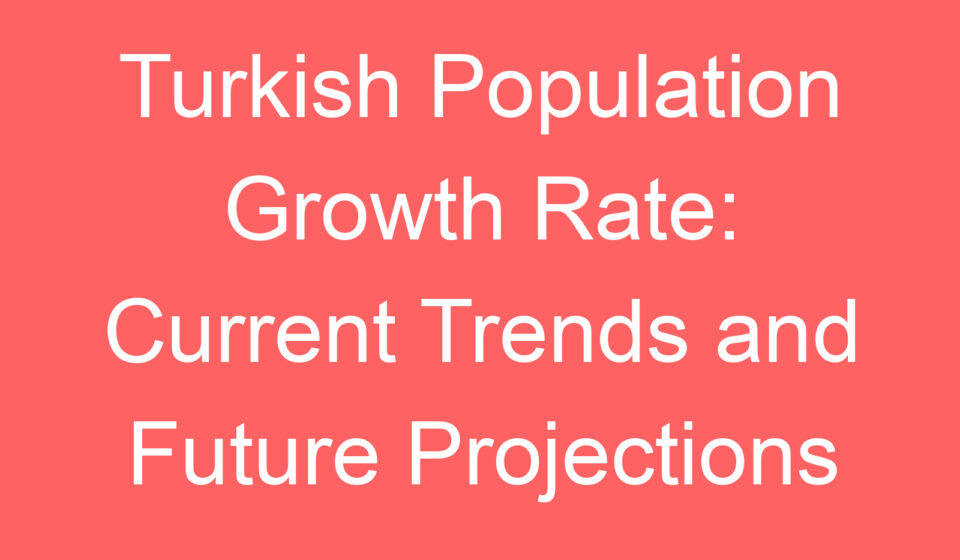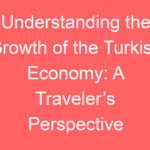
Turkish Population Growth Rate: Current Trends and Future Projections
Understanding Turkey’s population growth is essential for travelers, investors, policymakers, and anyone curious about the country’s future direction. The nation, strategically located between Europe and Asia, has experienced major demographic transformations over the past few decades. From periods of rapid growth to today’s noticeable slowdown, Turkey’s demographic path is at a turning point. Current data reveal a slowing growth rate, and projections suggest the population may soon peak before entering a period of gradual decline. To fully grasp this shift, it’s important to look at not only the raw numbers but also the social, cultural, and economic factors that are driving change. Here’s a detailed look at where Turkey stands now, the forces influencing its demographics, and what this means for the years to come.
Table Of Content
Current Growth Rate: A Noticeable Slowdown
Turkey’s population growth rate has consistently decreased over recent years:
- 📊 2023: ~0.41% annual growth
- 📊 2024: ~0.34% annual growth (approx. 225,000 additional people)
For comparison, in the early 2000s, Turkey’s growth rate was well above 1%, fueled by higher fertility and younger age structures. The sharp decline is a reflection of long-term demographic realities such as reduced fertility, an aging population, and changing migration dynamics. This slowdown positions Turkey alongside many European nations where growth has plateaued. Policymakers often point to this trend as evidence that Turkey is shifting from a “developing” demographic model to a more “developed” one, where population stabilization or even decline becomes normal.
Natural Increase: Births vs Deaths
Although the population still grows naturally, the gap between births and deaths is narrowing year by year:
- 👶 2023: 961,566 births vs 526,416 deaths → natural increase of 435,150 people
- 👶 2024: 937,559 births vs 489,361 deaths → natural increase of 448,198 people
Key demographic metrics paint a clearer picture:
- 📈 Crude birth rate: ~11.0 per 1,000 (2024)
- ⚰️ Crude death rate: ~5.7 per 1,000 (2024)
- 👩👧 Fertility rate: 1.48 children per woman — far below the replacement level of 2.1
Historically, Turkey’s fertility rate was more than double its current level. Families with four or five children were once the norm, especially in rural areas. Today, however, urbanization, education, and shifting lifestyles have transformed expectations. Many urban couples now delay marriage and childbearing, often choosing to have only one child or none at all. Rising living costs, changing gender roles, and career priorities also play a role. This means that while births still exceed deaths, the margin is shrinking. Unless fertility rises, Turkey’s natural increase may turn negative in the coming decades, creating structural challenges similar to those faced by countries like Japan or Italy.
Migration: A Net Negative Influence
Migration has become a critical factor in Turkey’s population trajectory. Official numbers indicate:
- ✈️ 2023: –318,070 net migration (more people left than entered)
- ✈️ 2024: –275,952 net migration
Turkey is both a host and a transit country. Millions of refugees from neighboring conflicts live within its borders, but many are not counted in permanent population statistics. Meanwhile, many young, educated Turks emigrate for opportunities abroad, particularly in Europe, North America, and the Gulf states. This combination has produced a negative migration balance in recent years. For Turkey, migration has shifted from being a source of population growth to a force that offsets natural increases. Long term, if the trend continues, migration may accelerate demographic decline, especially if the outflow disproportionately affects younger, highly skilled segments of the population.
Projections: Approaching a Peak, Then Decline
Forecasts by TÜİK (Turkish Statistical Institute) and the United Nations reveal a clear pattern:
- 🔮 2030: Population ~88.2 million
- 🔮 2045–2050: Peak population ~91–94 million, depending on the scenario
- 🔮 2050: ~93.8 million in TÜİK’s medium scenario
- 🔮 2100: Fewer than 77 million in the medium scenario (declining phase)
UN models suggest a population peak around 2047 at ~91.4 million, followed by a long-term decline toward ~65 million by the end of the century. These projections emphasize that Turkey’s demographic window of steady growth is closing, and the country must prepare for a future of demographic contraction. In addition, age distribution forecasts show that by the end of the century, the median age will rise dramatically, with a significant proportion of the population over 65. This transformation will fundamentally alter social services, labor markets, and intergenerational dynamics.
What This Means for Turkey’s Future
- 👵 Aging Population: By 2050, the share of working-age citizens (15–64) will shrink to around 61%. By 2100, it could drop below 56%, meaning a significantly older society. This shift will create a heavy dependency ratio, with fewer workers supporting more retirees.
- 💰 Economic Impact: A smaller labor force supporting more retirees may place heavy pressure on pensions, healthcare, and social support systems. Productivity will need to rise sharply to compensate for the smaller workforce, and Turkey may need to consider policies that keep older citizens active in the labor market longer.
- 🏙️ Urban Planning Challenges: Cities like Istanbul, Ankara, and Izmir may transition from managing rapid growth to maintaining livability in an older, slower-growing population context. Infrastructure investments will need to shift from expansion projects to adaptation, such as accessible public transport and age-friendly housing.
- 👨👩👧 Cultural and Social Shifts: Family structures may continue to evolve, with smaller households and greater emphasis on elder care. Traditional multi-generational households may re-emerge as families adapt to caring for elderly relatives, or alternatively, reliance on professional elder-care services may expand.
- 🏛️ Policy Pressures: Government incentives to raise birth rates may intensify, but reversing fertility decline is historically very difficult. Turkey may experiment with financial incentives, childcare subsidies, and family-friendly workplace reforms, though their effectiveness remains uncertain.
Implications for Tourists and Expats
For visitors, students, or those planning to move to Turkey, these demographic changes carry both immediate and long-term implications:
- 🌍 Vibrancy Today: Turkey still boasts a relatively young population compared to Europe. This translates into cultural energy, bustling urban centers, and a workforce that continues to fuel dynamic sectors like tourism, hospitality, and technology. Nightlife, festivals, and cultural activities thrive thanks to this demographic profile.
- ⏳ Future Adjustments: As the population ages, public services, health infrastructure, and even tourism offerings may shift toward older demographics. Expats may also notice policy changes designed to attract skilled workers to offset domestic labor shortages. Immigration policies could become more welcoming as Turkey seeks to stabilize its workforce.
- 🏡 Opportunities and Challenges: Real estate, healthcare, and retirement services may expand as growth industries. Investors may find opportunities in elder care facilities, health tech, and property development aimed at retirees. At the same time, younger travelers will still enjoy Turkey’s lively urban culture for decades to come, as the effects of aging take time to reshape the social fabric.
Conclusion: A Turning Point in Demographics
Turkey’s population is still growing — but only slightly. The days of rapid expansion are behind it. Fertility is well below replacement, migration is negative, and an aging society is emerging. Projections show the population peaking around mid-century before entering gradual decline. For tourists, expats, investors, and policymakers, recognizing these patterns is essential for understanding Turkey’s present vitality and the profound demographic challenges that lie ahead. How Turkey navigates this transition will shape its economy, culture, and role on the global stage well into the 21st century. The coming decades will test Turkey’s ability to adapt — balancing tradition and modernization, supporting its aging citizens while fostering innovation, and redefining its place in a world where demographics increasingly drive destiny.

